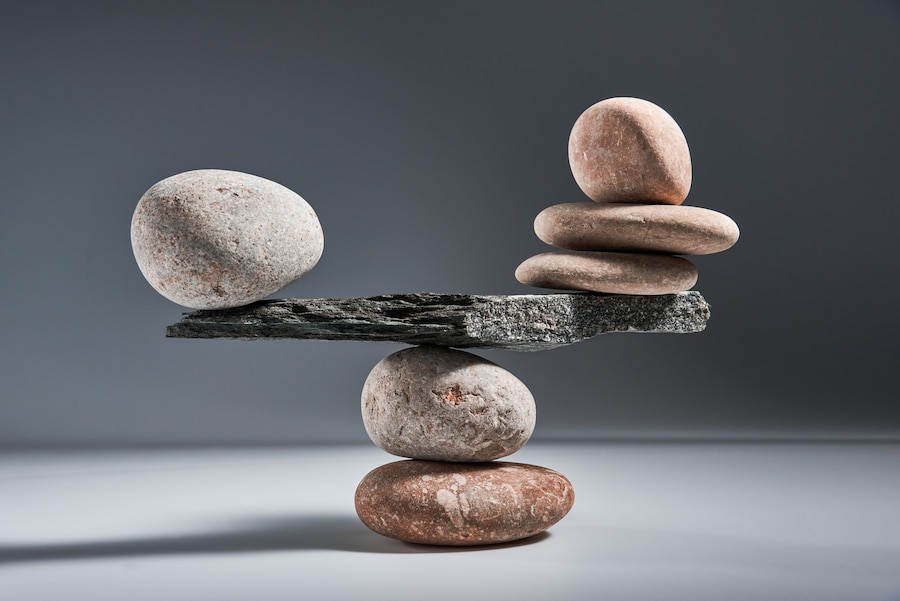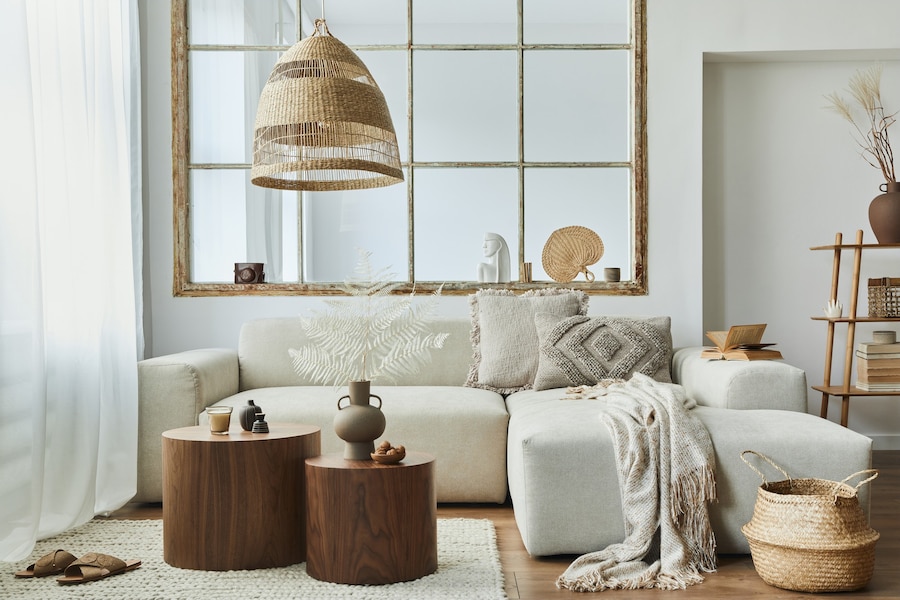In interior design, harmony is the exquisite melody orchestrating the symphony of aesthetics, functionality, and personal expression within our living spaces. The secret sauce transforms a mere room into a captivating and inviting haven. But what precisely is harmony in interior design, and why should it be pivotal in your home decor? Today, we embark on an informative journey into the world of harmony. We will see its many facets, grasp its significance, and equip you with the knowledge and tools to achieve it, ultimately crafting stunning and cohesive interiors.
What is Harmony in Interior Design?

Before truly appreciating harmony’s role in interior design, we must define its meaning. At its essence, harmony creates a sense of unity and cohesion within a space. It’s about ensuring that all the elements in a room work together in a way that is visually pleasing and balanced.
The Key Elements of Harmony
To better understand harmony, we must break it down into key elements. These elements are the building blocks that designers use to create a harmonious space:
- Color Harmony: Color is one of the most powerful tools in an interior designer’s arsenal. Achieving color harmony involves selecting a palette that works well together and evokes the desired mood.
- Balance: Balance in interior design refers to the distribution of visual weight in a room. Achieving balance ensures that no single element overpowers the others.
- Proportion: Proportion deals with the size and scale of objects concerning each other and the space as a whole. Proper proportion creates a sense of equilibrium.
- Contrast: Contrast adds interest and variety to a space by highlighting differences in color, texture, or shape. It can create focal points and prevent monotony.
- Unity: Unity is the glue that holds everything together. It’s about ensuring all the design elements belong in the same space.
The Significance of Harmony in Interior Design
Now that we understand the elements that make harmony let’s explore why it’s important in interior design.
Creating a Pleasant Atmosphere
Harmonious interiors are inherently pleasing to the eye. When everything in a room works together, it creates a sense of comfort and tranquility. Imagine walking into a well-designed living room where the colors, furniture, and accessories complement each other. It’s an inviting space where you instantly feel at ease.
Enhancing Functionality
Harmony isn’t just about aesthetics; it also plays a crucial role in the functionality of a space. When elements are in harmony, they flow seamlessly, making navigating and using the room as intended easier.
Reflecting Personal Style
Interior design is a form of self-expression, and achieving harmony allows individuals to showcase their unique style. Whether your taste is minimalist, eclectic, or traditional, harmony can be tailored to suit your preferences.
How to Achieve Harmony in Interior Design?
Now that we understand what harmony is and why it matters let’s explore practical ways to achieve it in your home.
Choose a Color Palette
Selecting an appropriate color palette is the first crucial step in your interior design journey. Consider the emotions and atmosphere you wish to evoke in each room. Are you aiming for a serene and calming ambiance, or do you want to infuse drama and energy into the space? Soft pastels like pale blues and muted greens can create a sense of tranquility, perfect for bedrooms and relaxation areas. On the other hand, bold and contrasting colors, such as deep reds and vibrant yellows, can inject vitality and drama into living spaces, making them ideal for social gatherings.
Balance the Elements

Achieving balance is pivotal to the harmony equation. Balance can be categorized into two primary forms: symmetrical and asymmetrical.
- Symmetrical Balance: In symmetrical balance, you mirror elements on either side of a central axis. Imagine placing a large, bold piece of furniture like a grand piano on one side of a room. To maintain symmetry, balance it with something visually weighty on the opposite side, such as a matching settee or a collection of smaller items like side tables, lamps, or artwork. Symmetry offers a sense of stability and order.
- Asymmetrical Balance: Asymmetry involves creating balance through the distribution of visual weight rather than mirroring objects. Combining dissimilar objects with an equivalent visual presence can achieve this more dynamic approach. For instance, a large, eye-catching piece of art on one wall can be balanced by placing a visually intriguing piece of furniture or a group of smaller decor items on the opposite side. Asymmetry adds a touch of creativity and intrigue to a room.
Pay Attention to Proportion
Proportion plays a vital role in ensuring that the elements in your room are appropriately sized concerning each other and the space as a whole. Oversized furniture can overwhelm a room, making it feel cramped and uncomfortable. Conversely, too many small items can get lost in a spacious area, creating a cluttered and chaotic atmosphere. To achieve proportion, consider the size of your room and the scale of the furniture and decor you plan to incorporate. Ensure that each element harmonizes with the overall dimensions of the space, maintaining a comfortable and balanced feeling.
Embrace Contrast
Contrast is the secret ingredient that adds depth and interest to your design. It’s about juxtaposing elements that differ in color, texture, or style to create visual intrigue and focal points. Consider the following ways to embrace contrast:
- Color Contrast: Pairing light and dark colors can create a striking visual impact. For instance, a room with predominantly light walls and furnishings can be accented with bold, dark-colored accessories or upholstery.
- Texture Contrast: Combining different textures adds tactile interest to a room. Consider pairing smooth, glossy surfaces with rough, textured materials, like a sleek glass coffee table atop a shaggy rug.
- Style Contrast: Mixing design styles can also be a source of contrast. For example, incorporating sleek, modern furniture into a traditional room can create a captivating fusion of old and new.
Conclusion
In interior design, harmony is the magical thread that weaves together all the elements of a room. It’s the secret ingredient that transforms a space from ordinary to extraordinary. By understanding the elements of harmony and how to achieve them, you can create living spaces that are visually stunning, functional, and reflective of your unique style. So, the next time you step into a well-designed room, take a moment to appreciate the harmony that makes it truly exceptional.


